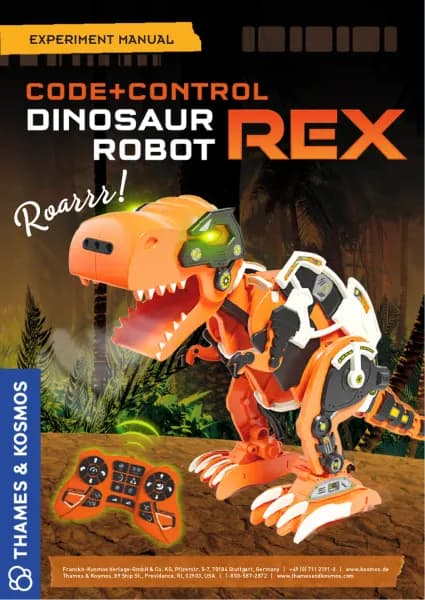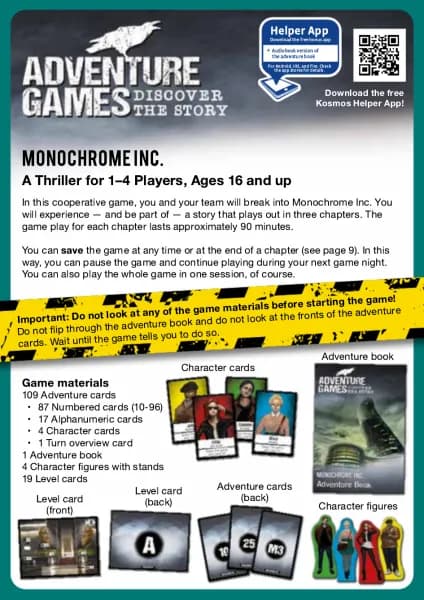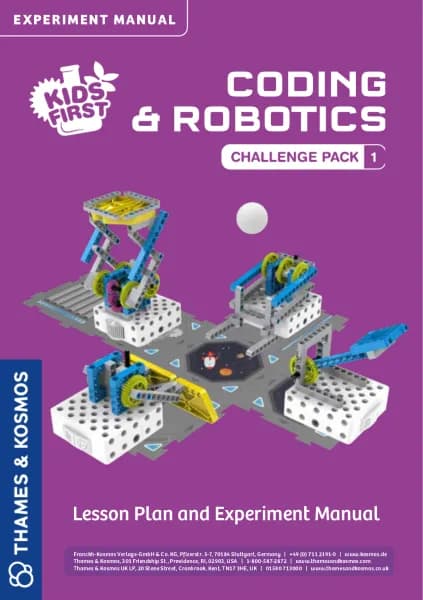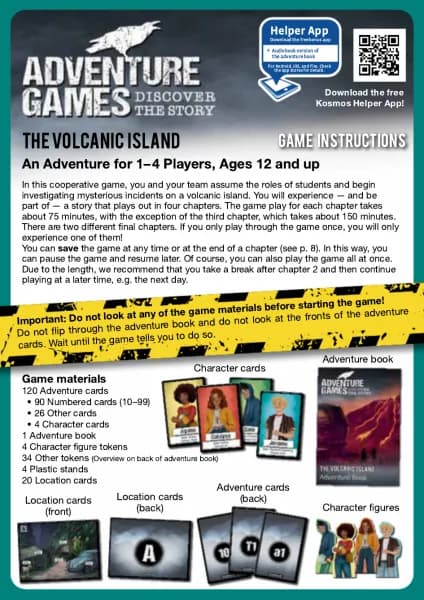Thames & Kosmos Kids First: Crystals, Rocks & Minerals handleiding
Handleiding
Je bekijkt pagina 33 van 36
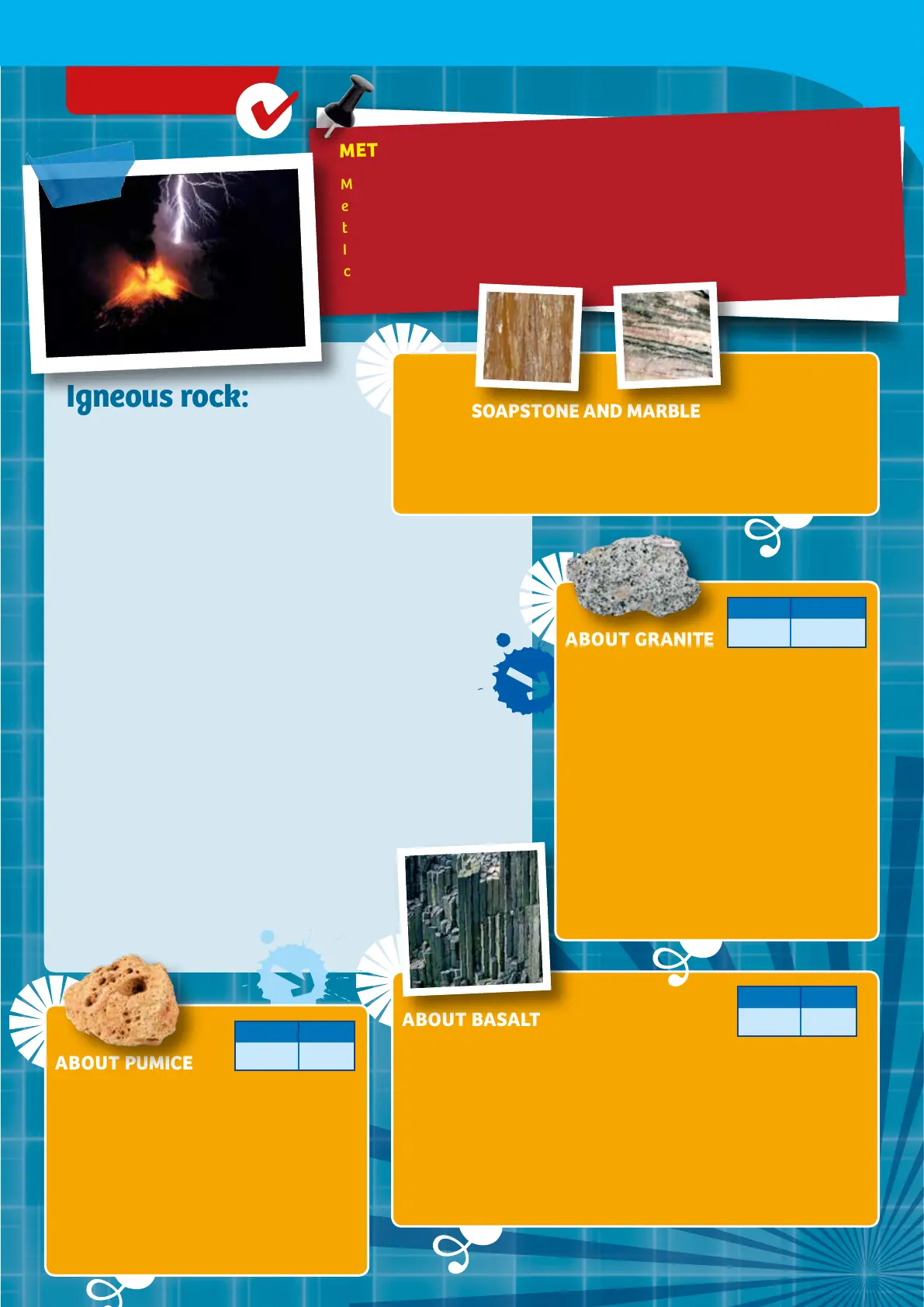
Igneous rock:
FORMED IN THE FIRES OF THE DEEP
We live on a ball of glowing-hot rock
covered with a cool and solid crust
that is only a few miles thick. It’s no wonder, then,
that most of Earth’s crust is made of rocks that
used to be liquid-hot at one time or other. This
type of rock is called igneous rock.
Igneous rock is made when molten magma cools
and solidifies inside Earth, or when molten lava
cools and solidifies after it spews out of volcanoes
onto Earth’s surface. When formed inside Earth, it
is called intrusive and when formed at the
surface, it is called extrusive.
Together, igneous and metamorphic
rocks make up about -% of
Earth’s crust.
ABOUT
BASALT
Sometimes, liquid-hot rock reaches Earth’s surface. It gushes out of the
crater of a volcano, flows for a distance, and cools off and hardens into
solid rock. This is how the dark gray chunks of basalt were formed.
Since it hardened quickly, its components didn’t have time to form large
crystals. So if you look with the magnifying glass, all you can see is a
fairly uniform gray mass. Basalt is very hard, and serves as a building
material for paving stones and houses. Sometimes it can form six-sided
columns as it hardens.
Hardness Density
6-7 3
31
CHECK IT OUT
Rocks: Building Blocks of Our Earth
METAMORPHIC ROCK: SOUVENIR FROM PRESSURE AND FIRE
Many parts of Earth’s crust are in movement — usually so slowly that we don’t
even notice it. As they rise and fall, stones that were on the surface are thrust into
the depths, where they are exposed to the heat and high pressure prevailing there.
In the process, they undergo great changes and even turn into new kinds of rock,
collectively known as metamorphic, which means “changing in form.”
ABOUT
SOAPSTONE AND MARBLE
In your rock collection, the soapstone belongs to the metamorphic
category, as does the light gray dolomitic marble, which comes from a
magnesium-rich calcium rock (dolomite).
ABOUT
GRANITE
The granular rock chunk in your kit is granite.
It is the granularity to which this rock owes its
name, which comes from the Latin word
granum, meaning grain. Granite was formed
when liquid-hot rock (magma) cooled off and
hardened far beneath Earth’s surface. That
happened very slowly, so the mineral
components had time to organize themselves
into fairly large crystals. Study your granite
chunks with the magnifying lens: you can
clearly see these crystals. They are made of
the minerals feldspar, quartz, and mica.
ABOUT
PUMICE
You could call pumice the Styrofoam® of the
rock world. It is created when gas-rich lava is
explosively expelled and cools so quickly as it
flies through the air that the bubbles of gas
cannot escape. The trapped gas bubbles make
the pumice so light that it can even float on
water — try it! Pumice is used in the production
of heat-insulating lightweight concrete blocks.
Hardness Density
5 2.4
Hardness Density
5-7 2.6-2.8
Bekijk gratis de handleiding van Thames & Kosmos Kids First: Crystals, Rocks & Minerals, stel vragen en lees de antwoorden op veelvoorkomende problemen, of gebruik onze assistent om sneller informatie in de handleiding te vinden of uitleg te krijgen over specifieke functies.
Productinformatie
| Merk | Thames & Kosmos |
| Model | Kids First: Crystals, Rocks & Minerals |
| Categorie | Niet gecategoriseerd |
| Taal | Nederlands |
| Grootte | 30537 MB |




